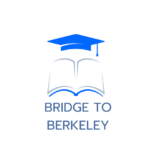Navigating a sprawling campus can be a daunting task for both new students and visitors. That’s where a comprehensive QC campus map comes into play. It’s more than just a tool to get from point A to point B; it’s an essential guide to understanding the layout, facilities, and landmarks of the institution.

From libraries to lecture halls, sports facilities to student unions, the QC campus map offers a detailed overview of the entire campus. Whether you’re a freshman finding your way or a seasoned senior looking for a shortcut, this map is your go-to resource. Stay tuned as we delve deeper into the features, uses, and benefits of the QC campus map.
This article aims to help you familiarize yourself with the QC campus map, ensuring you’ll never feel lost on campus again. So let’s embark on this journey of discovery together.
QC Campus Map
The QC campus map, from design to distribution, plays more than just a navigational role, facilitating more comfortable campus exploration. Acting as a comprehensive guide, it details the various campus amenities. Regular QC map users, including incoming freshmen and seasoned seniors alike, find the collection of necessary destination points, from libraries to sports complexes, extremely beneficial.
Historical Context

Beginning merely as a paper-based tool, the QC campus map has mirrored technological advancements, transforming into an essential digital companion for campus navigators. The initial days saw simplistic hand-drawn maps, serving a fundamental purpose of direction guidance. Heavily depended upon were landmarks, like beautiful architectural structures or historic sites, aiding in successful navigation across the campus.
As the campus landmarks increased, so did the complexity of the map. With the introduction of buildings, sports facilities, and other structures, the paper map evolved, incorporating additional information for enhanced guidance. With the campus expansions, the QC map, too, grew in response, illustrating these developments and maintaining its ever-present role as a comprehensive campus guide.
Example: The map version from the 1990s perhaps noted half a dozen buildings, while the current edition details over 20 structures, from halls to sports complexes.
Technologies Used in Modern Campus Maps

Today’s QC campus map leverages cutting-edge technology, transforming the static, paper-based maps into interactive, digital versions. Harnessing technologically advanced tools such as Geographic Information System (GIS) technology has enabled information layering on the campus map, enhancing details provided to the user.
In addition, the rise of mobile technology has seen the QC campus map morph into an application accessible at one’s fingertips. These mobile applications provide real-time location updates, complete with GPS directions. Progressing from static landmark-based directions, modern campus maps readily provide pathing assistance to any campus location, vastly improving map user experience.
Example: QR codes are prominent on current campus signage, providing instant access to the campus map application. This digital map even includes specific building floor plans, giving a complete internal view of the structure.
Key Features of QC Campus Maps
The QC Campus Maps offer a plethora of features aimed at enhancing user experience while efficiently navigating the expansive campus. Drawing upon digital advancements, the maps provide detailed information, real-time updates, and comprehensive overviews of campus amenities.
Accessibility Options
The QC campus maps charm lies in their accessibility. Rooted in inclusivity, they introduce wheelchair-friendly routing options, ensuring that everyone can navigate the campus with ease. Users can view elevator locations and routes in buildings, alongside the shortest or most accessible paths to their destinations. For instance, the indicators such as ‘R’ denote routes that are accessible to those with limited mobility. These features eliminate guesswork, helping users to plan their journeys more efficiently, considering factors such as distance, accessibility, and ease of travel.
Integration with Mobile Devices
Seamless integration with mobile devices sits at the heart of the QC campus maps’ utility. Users can access the map through a mobile application, making it portable and easy to use on-the-go. They can click on individual buildings for detailed information, including its history, additional services, operating hours, and images. Plus, real-time updates and notifications about changes in routes or campus infrastructure help users stay one step ahead. They can bookmark their frequently visited places for quick access, ensuring a swift and comfortable campus navigation experience.

